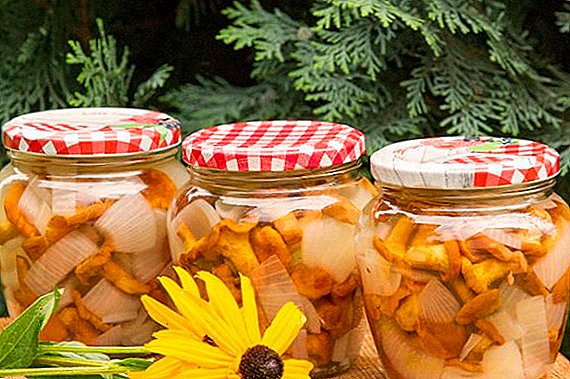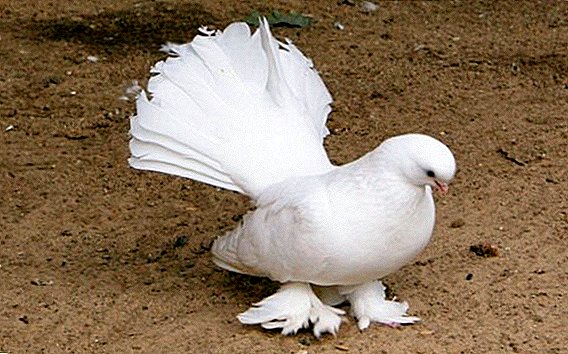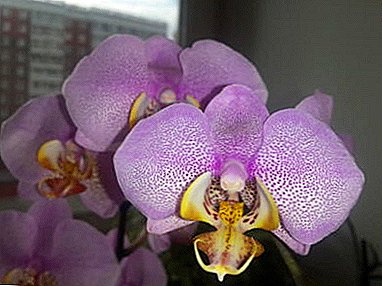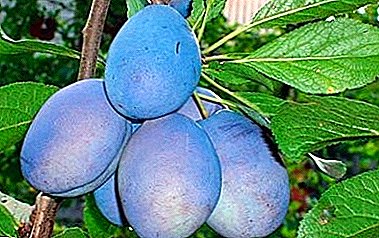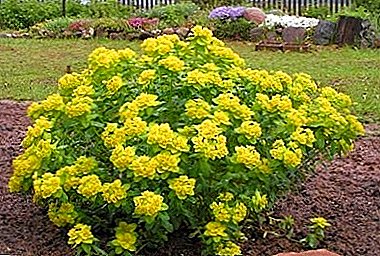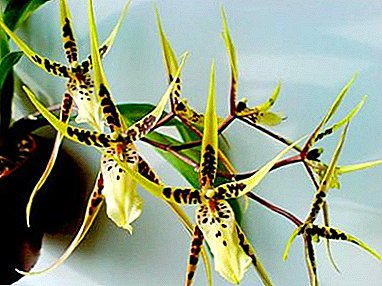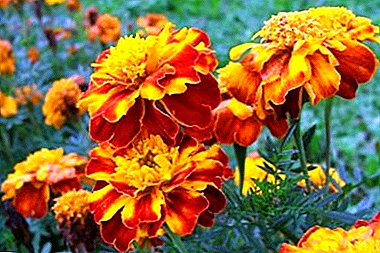
In our garden plots, city beds and parks, unpretentious marigold flowers grow everywhere.
These flowers adorn the flower beds and fill the air with a special scent. Although they do not require such attention to themselves in terms of care as many other species of plants, when taking care of them, they will delight with their incredible beauty. In the article you will learn what ailments are in these flowers and what to do so that the plants do not die.
Botanical description
Marigold is a herbaceous ornamental plant Aster family, or Asteraceae.
There are about 53 known species. These plants came to us from South America, where they reign even now. Thanks to the conquistadors, they spread to Europe, and then to Russia, Asia Minor and other countries. Learn more about marigold varieties, as well as see the description and photo of flowers here.
In the wild, tagetes are found in the west of Transcaucasia. They have a developed root system and strong upright stems. Their leaves are all tones of green. Depending on the species and varietal accessories bushes are both low and high, ranging in height from 20 cm to 2 meters.
Flowers marigolds are both simple and terry, both large and small. They can be modestly colored, or they can be catchy and well-dressed, yellow, orange or red-brown. They are characterized by rapid flowering and they do not impose special requirements for growing.
In addition to decorative purposes, marigolds are used as medicine (to improve digestion and immunity) and spice. They contain essential oils, vitamins, trace elements and biologically active substances.
Common diseases with photos of damaged plants
Why do not bloom?

Diagnostics: on average, up to 2 months must pass from planting to flowering (depending on weather conditions).
In detail about the features of marigold care in the home and in the open field, we told in this material.
In this case, often all the forces of the plant go to the development of green mass.
The reasons: lack of flowering can cause an abundance of fertilizer and a large amount of moisture, as well as drought, lack of air in the soil or lack of natural light.
What to do: The planting site should be sunny or in partial shade. You need to water every day, on hot days - in the morning and in the evening. Loosening the soil at least once a week stimulates flowering. Faded buds should be removed. You also need to add fertilizer, otherwise the soil is depleted.
Why do the leaves turn white?

Diagnostics: white leaves on the leaves.
The reasons: marigold leaves turn white with a spider mite (spider-like white bloom) or powdery mildew (white spots and leaves wrapping around the edges).
What to do: the mite does not like high humidity, so if you frequently spray flowers with water, it will not destroy the flowers. In addition, tobacco infusion diluted with water and laundry soap helps (then the tick will definitely leave). Sulfur-based fungicides are used to protect against powdery mildew.
More on how to protect marigolds from spider mites and other pests and diseases can be found here.
For what reason do they fade?

Diagnostics: bushes fade quickly.
The reasons: marigolds can be affected by root rot, blackleg, slugs, aphids, as well as other diseases and pests. Often for this reason they wither:
- Black leg is the very first disease of marigolds. Light, darkening and decaying spots appear at the bottom of the stem, leading to fading.
- In later stages, under adverse conditions, marigolds can be affected by root rot. In this case, the plants begin to grow slower, turn yellow, and then they die.
- It happens at the end of the summer in the group plantings appear marigolds with yellowed shoots and deformed leaves with yellow, cream, bronze spots and patterns.
You can also notice the underdevelopment of buds and the lack of seeds. All this is a symptom of viral diseases.
- In greenhouses, in hot conditions, in the open field, plants can be affected by the greenhouse whitefly. This small butterfly feeds on the sap of marigold leaves. Soot fungi often settle on the sugary secretions of its larvae and the leaves are covered with black bloom.
- At high humidity (rain) slugs and snails come out. They gnaw the stalks and leaves of the tagges.
- Thrips (small insects) eat buds of marigolds, drinking juice from them. The defeat of thrips can be seen by small punctures on the petals of the buds. The bud begins to rot, then dries out and disappears (more about why marigolds dry and what to do about it, read this article).
- Very often foliage begin to eat caterpillars. Caterpillars devour the leaves and the plant loses its appearance. In addition, the caterpillars use leaves for their larvae.
- In some cases, aphid appears on the marigolds. It clings to the entire surface of flowers, tops of shoots, buds and stems.
What to do:
 To save the plants from the black stalk seeds and soil before sowing should be treated with fungicides and potassium permanganate added to the water for irrigation - but you shouldn’t do this often (see how to grow marigolds from seeds here). If the marigolds began to die, you should immediately remove them. The ground next to the remaining plants sprinkled with calcined sand, perlite or ash.
To save the plants from the black stalk seeds and soil before sowing should be treated with fungicides and potassium permanganate added to the water for irrigation - but you shouldn’t do this often (see how to grow marigolds from seeds here). If the marigolds began to die, you should immediately remove them. The ground next to the remaining plants sprinkled with calcined sand, perlite or ash.- Root rot infection can be prevented by providing them with the best conditions for growth (loose, structural soil, regular weeding).
- In viral diseases, infected flowers must be removed.
- If whitefly is affected, flowers are treated with pesticides, alternatively, aktar.
- Against slugs and snails you can lay out small boards, thick cloth, halves of potatoes or apples near marigolds. Slugs gather under them and they can be destroyed.
When slugs appear, the soil around the plants is sprinkled with ash and lime. Shrubs are sprayed with mustard suspension.
- Preventing thrips can be preventive.
- To get rid of caterpillars flowers are sprayed with chemicals.
- To get rid of aphids plant watered with a strong jet of water. And so that she did not return, treated with chemical agents.
What to do if Chernobrivtsy die?
What should be done when the marigolds completely disappear? If any disease struck the flowers and they die, they are removed and, in the case of a progressive disease, nearby plants are transplanted to another place in fresh soil.
Prevention and control measures
In most cases, pests bypass the marigolds. Only with the wrong care they have to save.
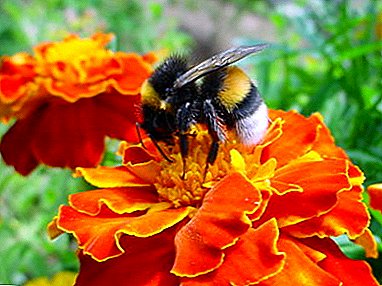 The soil should not be wet.
The soil should not be wet.- On hot days they need daily watering. At other times they are watered when the soil dries.
- Sunlight should be moderate (on a hot afternoon, it is better to cover them with agrofilm).
- Top dressing is done no more than once a month.
- The soil should be loosened and weeded and fertilized.
Conclusion
Among those who love to grow gardens and work in areas marigolds are the most popular type of flower. They bloom these areas with their flowering. These flowers are often planted around the edges of the beds, as they protect the nearby plants from pests. Marigold unpretentious, but need attention, as with improper care they can get sick, although this happens in rare cases.


 To save the plants from the black stalk seeds and soil before sowing should be treated with fungicides and potassium permanganate added to the water for irrigation - but you shouldn’t do this often (see how to grow marigolds from seeds here). If the marigolds began to die, you should immediately remove them. The ground next to the remaining plants sprinkled with calcined sand, perlite or ash.
To save the plants from the black stalk seeds and soil before sowing should be treated with fungicides and potassium permanganate added to the water for irrigation - but you shouldn’t do this often (see how to grow marigolds from seeds here). If the marigolds began to die, you should immediately remove them. The ground next to the remaining plants sprinkled with calcined sand, perlite or ash. The soil should not be wet.
The soil should not be wet.